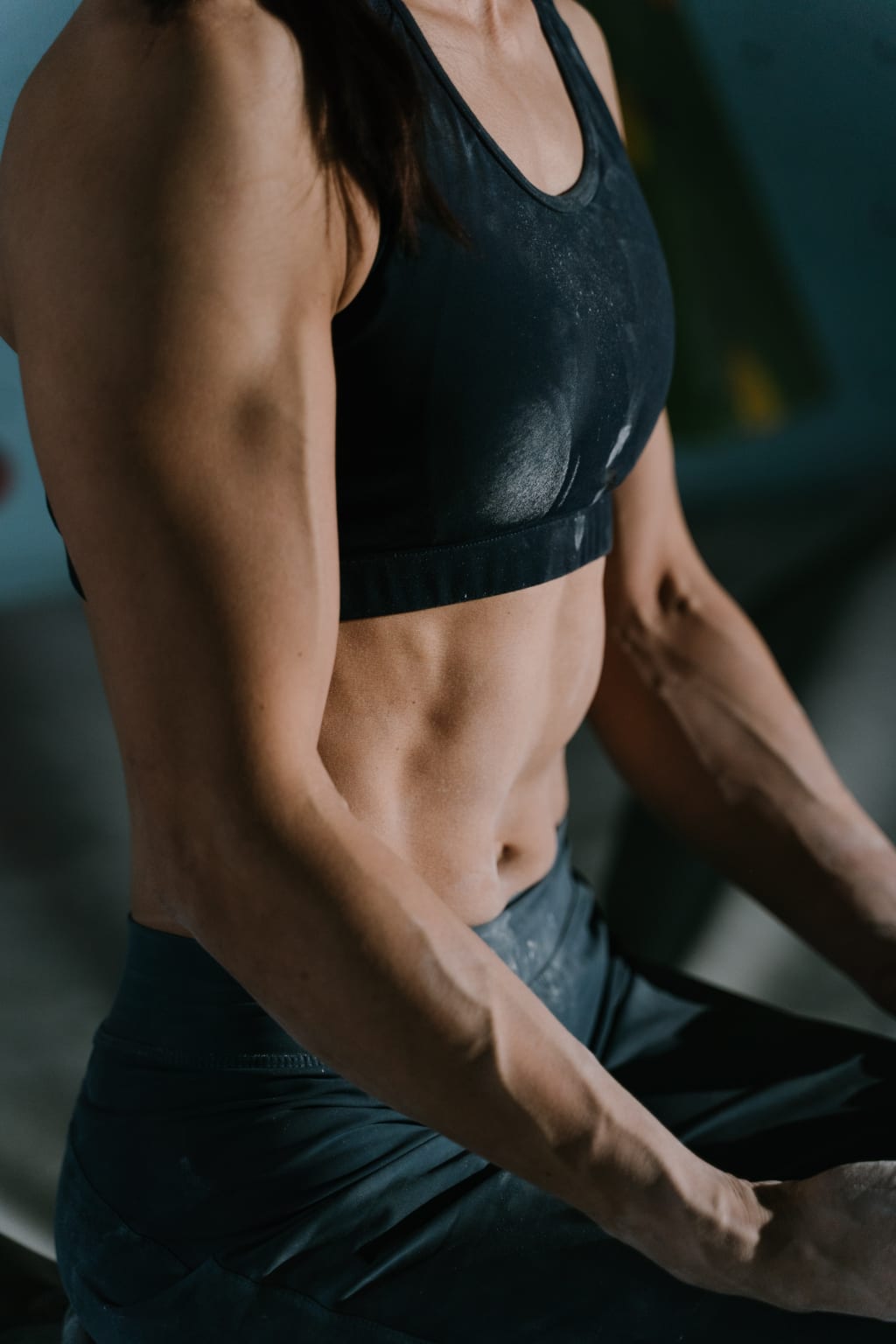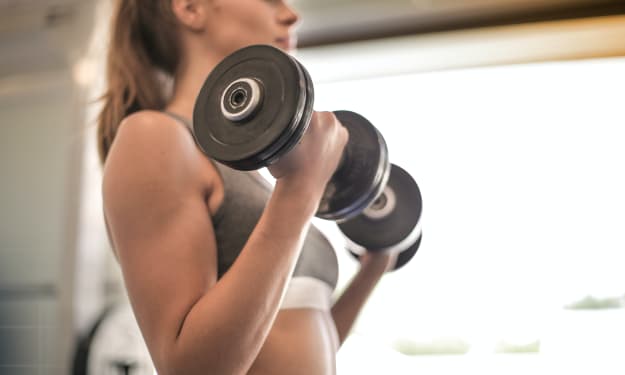Mastering the Art of Deadlifts Unleashing Strength Growth and Injury Prevention
Unleash Your Inner Strength: Mastering the Art of Deadlifts for Optimal Performance and Injury Prevention

Introduction:
Deadlifts are often perceived as intimidating and fearsome exercises. However, with the right approach and understanding, they can become a valuable tool for unlocking your untapped strength, promoting muscle growth, and minimizing the risk of injury. In this article, we will delve into five super simple steps that will guide you through the proper execution of deadlifts. By following these steps, you'll not only conquer any fear associated with deadlifts but also maximize your potential for growth and performance.
Step 1: Creating the Pillar - Setting the Foundation for Success
To ensure a solid foundation, it is essential to position your body correctly before attempting the lift. Start by aligning the bar with your shoelaces, placing it at the midpoint of your foot. Your feet should be approximately hip-width apart, toes facing forward. While this foot stance is suitable for most individuals, you can adjust the width or toe direction in Step 4 if necessary. Achieving the correct position for your hips and ribs is crucial to avoid back injuries. Visualize your hips as a bowl filled with water and tilt your pelvis back, leveling the bowl. Simultaneously, engage your core to flatten your ribs. Maintaining this alignment, squeeze your glutes and inner thighs while straightening your arms. Feel the activation of your glutes, inner thighs, core, and lats, creating a stable and strong pillar.
Step 2: Grabbing the Bar - Maintaining Tightness and Position
Instead of compromising the solid foundation created in Step 1, focus on maintaining tightness throughout the movement. As you begin to lift, imagine your arms as hooks, gently holding onto the bar. While pushing your hips back, ensure that your fists remain pressed down beneath your shoulders. This action prevents rounding of the back and shoulders, preserving the established stability. Remember not to let your big toes lose contact with the ground, as it indicates excessive hip movement. Gradually lower yourself by bending your knees until your shins touch the bar, allowing you to grip the bar just outside your knees. Pay attention to three critical factors: the bar's proximity to your midfoot, the positioning of your hips, and maintaining a neutral spine. These considerations ensure optimal load distribution and alignment throughout the lift.
Step 3: Creating the Wedge - Strengthening the Core and Upper Body
To protect your lower back and enhance your lifting power, it is vital to create a powerful position called the wedge. Initiate the wedge by driving your knees out against your arms while taking a deep 360 breath, expanding your core. Maintain this braced core position as you extend your chest upward from the hips to the head. Activate your lats by squeezing your armpits, as if you were trying to make orange juice with oranges held in your armpits. This engagement should be felt in your lats, core, glutes, and hamstrings, further reinforcing the stability and strength of the lift.
Step 4: Pushing - Executing the Lift with Precision
Contrary to popular misconception, the deadlift is not a simple pull but rather a push from the floor. Instead of rushing the movement, concentrate on maintaining the tightness and form established in the previous steps. Visualize your arms as ropes with hooks, gradually pushing the floor away with your feet. This approach ensures a smooth and controlled ascent. As you lift, your hips and chest should rise together, maintaining a neutral spine.
Overcoming the Fear of Deadlifts"
Deadlifts can be quite intimidating at first glance, but fear not! In this comprehensive guide, I will walk you through five simple yet crucial steps to master the deadlift technique. By following these steps, you will not only maximize your muscle growth and unleash your untapped strength and performance but also minimize the risk of injury.
Step 5: Establishing the Foundation
Creating a solid foundation is paramount before attempting a deadlift. Let's begin with your feet. Approach the bar and position it directly over the middle of your foot, aligning with your shoelaces. For most individuals, a hip-width stance with toes pointing forward works best. However, if this feels uncomfortable, feel free to adjust your foot width or toe direction accordingly. Now, let's focus on your hip and rib alignment. Many back injuries occur due to misaligned hips and ribs. Imagine your hips as a bowl filled with water. Instead of tilting your pelvis forward, tilt it back to maintain a flat bowl. Visualize bringing your belt buckle up towards your chin. As for your ribs, avoid flaring them outwards. Engage your core to flatten them. At this point, your hips and ribs should be stacked evenly. Squeeze your glutes and inner thighs together, lengthening your body. Additionally, make fists and push them down towards the ground to straighten your arms and activate your lats. You should feel your glutes, inner thighs, core, and lats all engaged and working harmoniously.
Step 6: Gripping the Bar
Maintaining the solid foundation we established in Step 1 is crucial while gripping the bar. Instead of rounding your back and shoulders, focus on preserving the pillar-like posture. Push your hips back while keeping your fists pushing straight down under your shoulders. Imagine holding grocery bags in each hand and closing a car door with your buttocks. Continue pushing your hips back without lifting your big toes off the ground. If you lose pressure in your big toes, you've pushed your hips too far back. Once you reach the endpoint, bend your knees and bring your shins close to the bar. Gradually lower yourself until you can grip the bar just outside your knees. Pay attention to three important aspects before proceeding to the next step. Firstly, ensure the bar is directly over your midfoot, as placing it too far away may strain your lower back. Secondly, find the sweet spot for your hip height—above your knees but below your shoulders—avoiding excessive squatting or leaning back. Lastly, maintain a neutral spine, including your neck, by drawing your head back and aligning it with the rest of your back.
Step 7: Creating Stability
Before you lift off, it's essential to establish stability through a powerful position known as "the wedge." To achieve this, drive your knees outward against your arms. Take a deep breath, expanding your core as if you were wearing a belt and pushing air against all sides of it. Brace your core as if someone were about to punch your stomach. Simultaneously, extend your chest and lengthen your body from your hips to your head, eliminating any rounding in your upper back and shoulders. Activate your lats by squeezing your armpits, as if you were trying to make orange juice with oranges held in your armpits. If done correctly, you should feel tension in your lats, core, glutes, and hamstrings.
Step 8: The Push
Now it's time for the lift! Many people make the mistake of perceiving the deadlift as a mere pulling motion and compromise their position. Instead, focus on maintaining the tightness achieved in Step 3
as you initiate the lift. Rather than jerking the weight off the floor, think of your arms as ropes with hooks at the end, simply hanging onto the bar. Keep the tightness in your body and concentrate on pushing the floor away with your feet. Gradually increase the force until the bar starts to lift off the ground. When performed correctly, your hips and chest should rise simultaneously, avoiding any rounding in your lower back. Continue pushing the floor away until the bar passes your knees, and then focus on thrusting your hips forward to meet the bar at the top of the lift. However, be cautious not to overextend your back at the top. Maintain a neutral spine by imagining that you're about to get punched in the stomach and keep your glutes squeezed together. At the peak of the lift, your hips, ribs, shoulders, and chin should align like parallel floors of a building. You may feel a slight pump in your lats, hamstrings, glutes, and even your lower back muscles, which contribute to stabilizing the weight. However, avoid overloading your lower back with excessive exercises in a single workout to prevent strain and potential injury. It's crucial to follow a well-designed program that provides step-by-step guidance for each exercise to minimize the risk of injury and maximize muscle growth.
Step 9: Controlled Descent
The final step is often overlooked but equally important for both safety and muscle development. Rather than simply allowing gravity to drop the weight, you should focus on controlling the descent. This part of the movement resembles Step 2, where you push your hips back and slide the bar down along your thighs as close as possible. Once the bar passes your kneecaps, you can bend your knees and guide the bar along your shins, ensuring it stays over your midfoot. Avoid bouncing the weight off the floor and instead maintain tension throughout the movement. Gently touch the floor before starting the next repetition.
Congratulations! You've successfully executed a perfect deadlift. It's normal to feel some apprehension at first, but by following these five steps with precision and maintaining proper form, you'll conquer any fear associated with deadlifts. If you'd like to explore other exercises or have specific areas where you need guidance, please leave a comment below. I'm creating a series of exercise articles and would love to cover topics that interest you. Remember, the key to safe and effective training is following a well-structured program tailored to your needs and goals. Visit buildscience.com and take our free analysis quiz to discover the program that suits you best.
Now that you have the knowledge and technique, embrace the challenge, and enjoy the journey toward improved strength and growth!
Please note : that I have rephrased the content while incorporating unique and engaging language.
About the Creator
Majid khan
John Smith is a certified fitness trainer and nutrition expert with over a decade of experience in the health and wellness industry.
Enjoyed the story? Support the Creator.
Subscribe for free to receive all their stories in your feed. You could also pledge your support or give them a one-off tip, letting them know you appreciate their work.






Comments
There are no comments for this story
Be the first to respond and start the conversation.